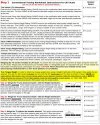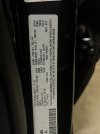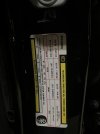PDiddy
Active Member
- Joined
- Aug 19, 2022
- Messages
- 60
- Reaction score
- 83
Like the title says, I took my 2022 Ram 1500 and 26ft travel trailer to the CAT scales for the first time. It was busy there and I didn't get much help. I pulled up on the scales and talked to a guy over the speaker. He told me I was good and to come on into the store to get my print out. So I parked and went in. I am not sure if the numbers are correct. Like I said, It was busy there and I was running out of time, so I didn't run over the scales a second time or ask a lot of questions.
First, my travel trailer is the Grey Wolf 26dbh. The sticker on the trailer says 6100lbs from the factory. I was assuming it would weigh around 6500-6600 at the scale today. The tanks are dry, but is has all our usual gear, two propane tanks, battery, heavy memory foam beds, and more. My Ram has a 1655lb payload. So I believe that makes my vehicle curb weight 5445lbs. When I weighed the truck today, I had myself and some tools with me. probably about 250lbs total. The truck has steps and bed cover, so add another 80lbs. These are (ish) numbers of course. But I am trying to lay out all the info I can for you.
Here is what the CAT numbers showed:
Steer axle: 3220
Drive axle: 3480
Trailer axle: 5760
Gross: 12460
So the gross looks to be about What I was guessing, but I was expecting 800lbs of that weight to be in my trailer, not my truck. Plus, the trailer weight is significantly less than the manufacturers stickered weight of 6100lbs. I am happy if it weighs less than I thought. It just seems odd that it is so much lower than an empty sticker weight.
If the trailer weight is accurate then my tongue weight is really high. My truck weighs 5445lbs (7100GVWR - 1655 payload), plus the additional cargo weighs 330lbs (me and cargo), equals 5775lbs. So my tongue weight is around 925lbs. That's about 16% of travel trailer.
As I am typing this all out, I am realizing that maybe these numbers are good, and my tongue weight is just on the high side. Am I missing something? Still seems odd that my trailer weighed so much less than it’s stickers weight. Thanks for any input you might have. I feel like I have a good grasp on all this, but its good to have someone check your work!
Thanks!
First, my travel trailer is the Grey Wolf 26dbh. The sticker on the trailer says 6100lbs from the factory. I was assuming it would weigh around 6500-6600 at the scale today. The tanks are dry, but is has all our usual gear, two propane tanks, battery, heavy memory foam beds, and more. My Ram has a 1655lb payload. So I believe that makes my vehicle curb weight 5445lbs. When I weighed the truck today, I had myself and some tools with me. probably about 250lbs total. The truck has steps and bed cover, so add another 80lbs. These are (ish) numbers of course. But I am trying to lay out all the info I can for you.
Here is what the CAT numbers showed:
Steer axle: 3220
Drive axle: 3480
Trailer axle: 5760
Gross: 12460
So the gross looks to be about What I was guessing, but I was expecting 800lbs of that weight to be in my trailer, not my truck. Plus, the trailer weight is significantly less than the manufacturers stickered weight of 6100lbs. I am happy if it weighs less than I thought. It just seems odd that it is so much lower than an empty sticker weight.
If the trailer weight is accurate then my tongue weight is really high. My truck weighs 5445lbs (7100GVWR - 1655 payload), plus the additional cargo weighs 330lbs (me and cargo), equals 5775lbs. So my tongue weight is around 925lbs. That's about 16% of travel trailer.
As I am typing this all out, I am realizing that maybe these numbers are good, and my tongue weight is just on the high side. Am I missing something? Still seems odd that my trailer weighed so much less than it’s stickers weight. Thanks for any input you might have. I feel like I have a good grasp on all this, but its good to have someone check your work!
Thanks!
Last edited:














